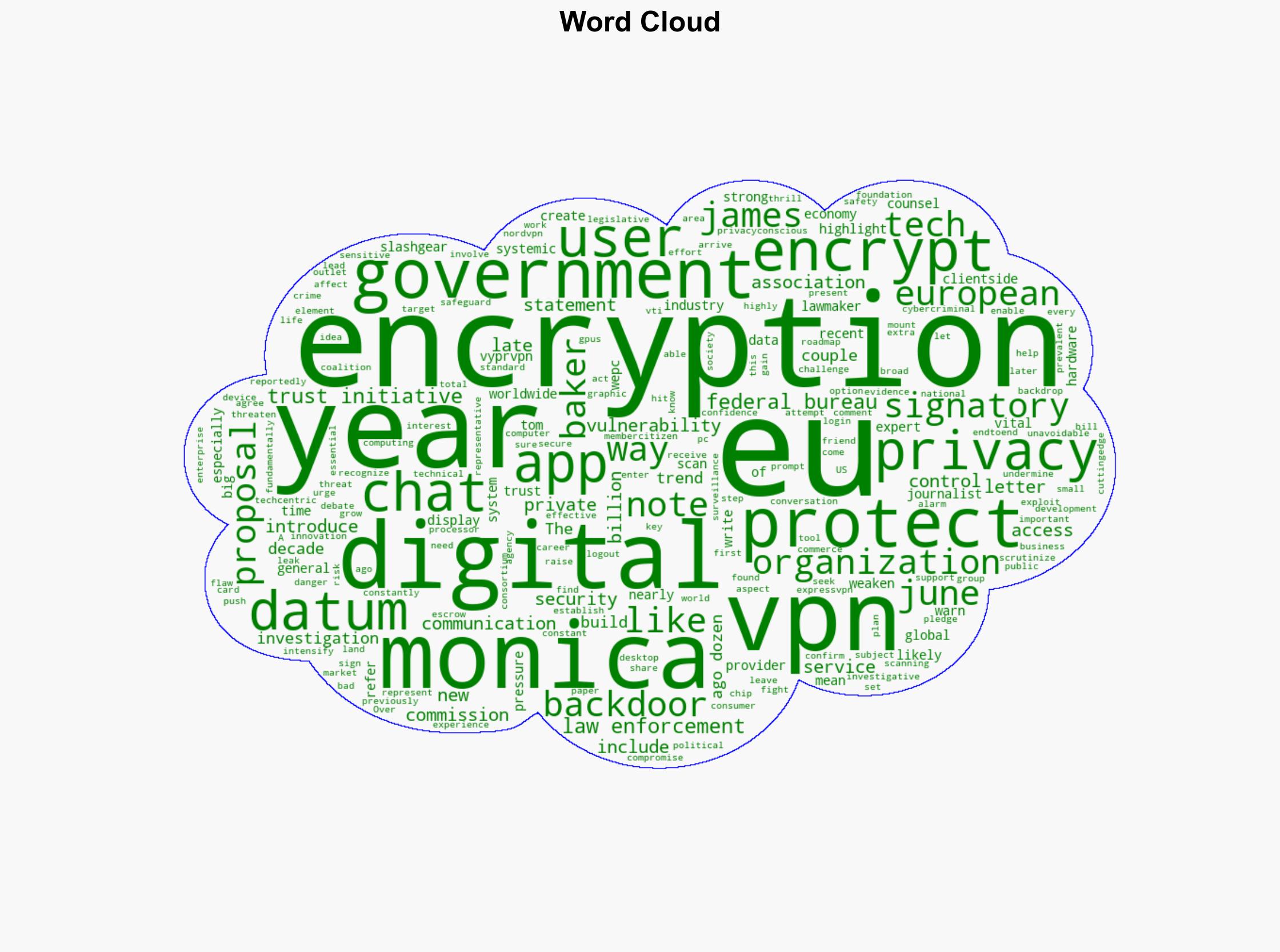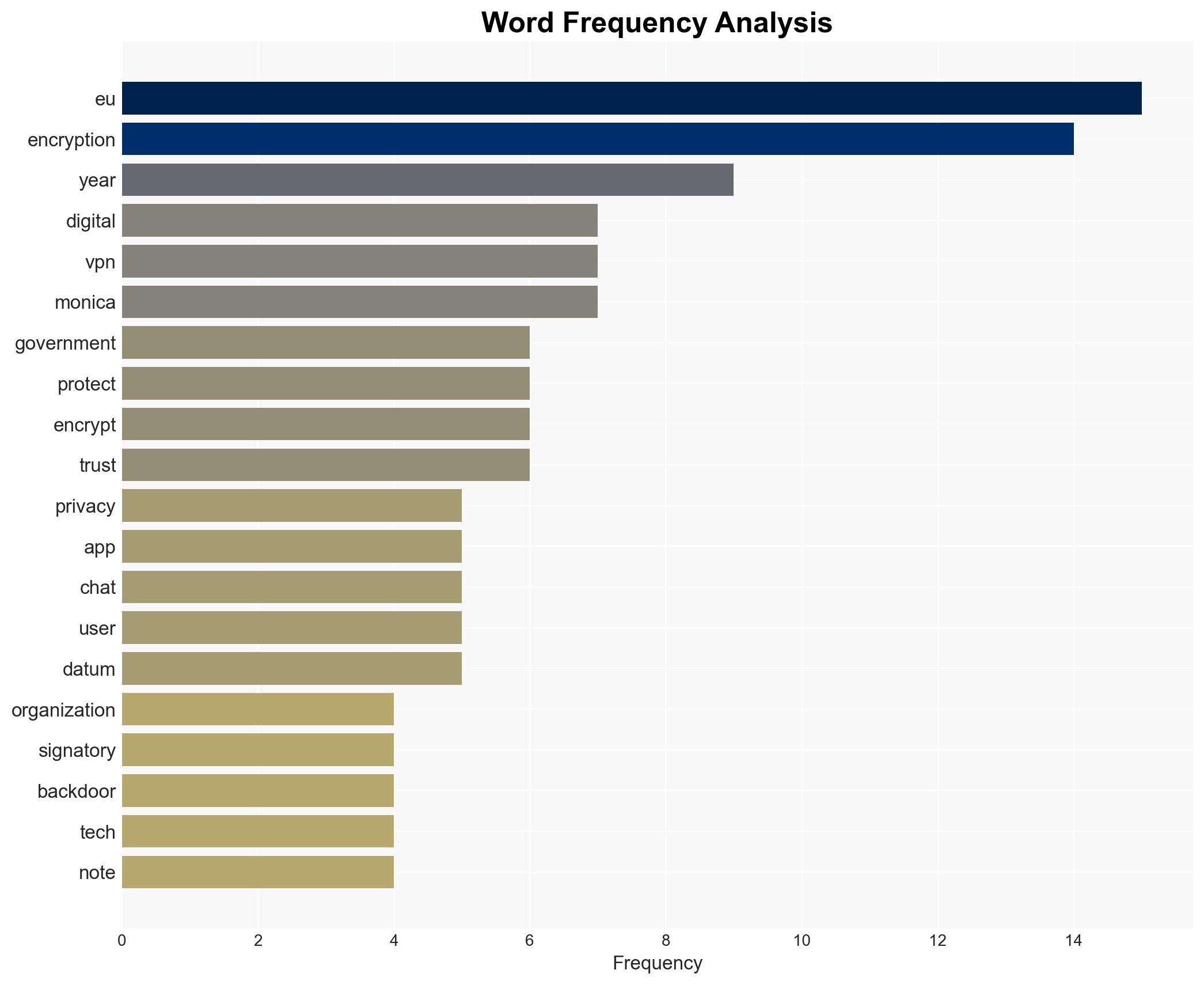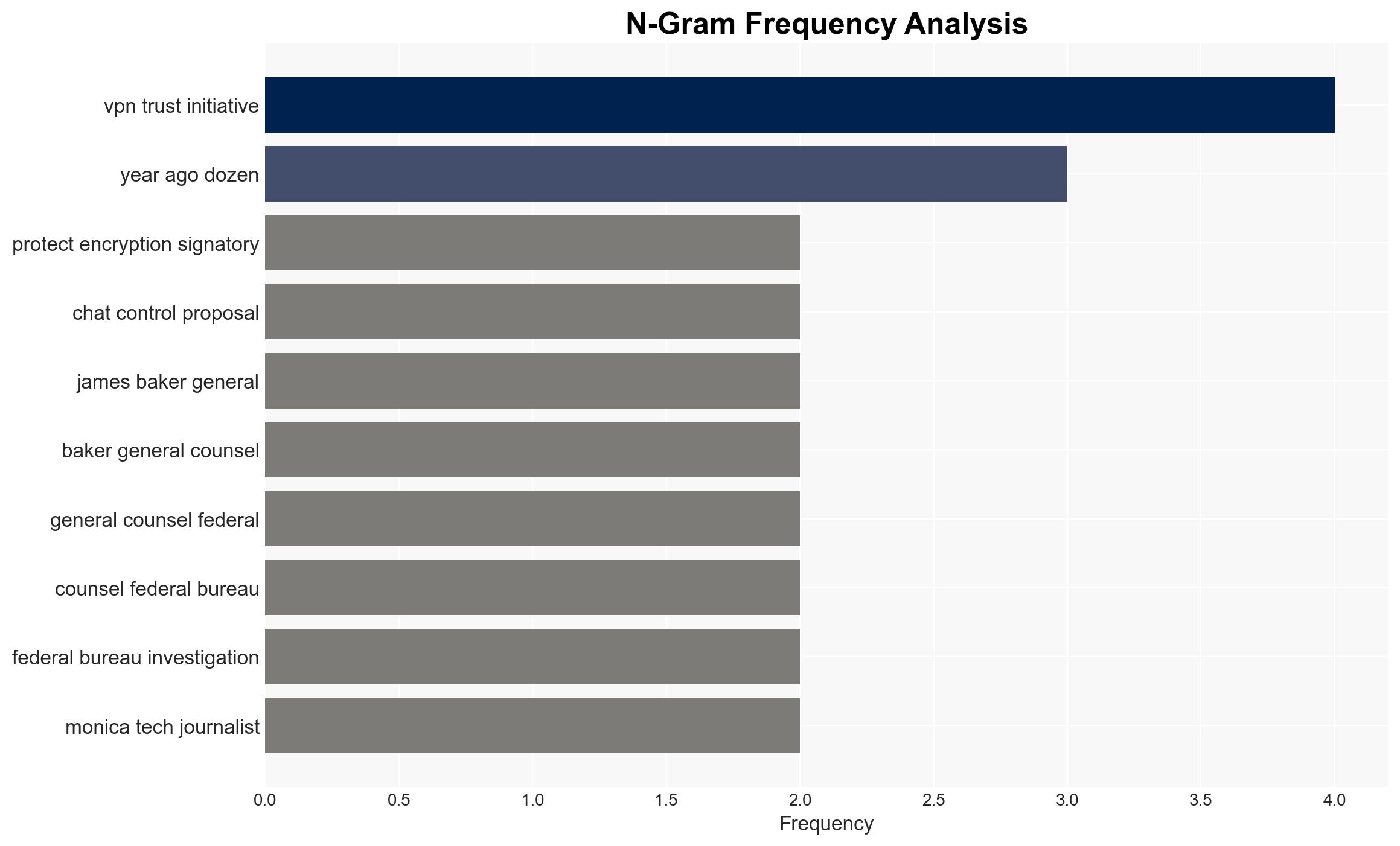Over 60 organizations call on governments worldwide to protect encryption – TechRadar
Published on: 2025-11-18
AI-powered OSINT brief from verified open sources. Automated NLP signal extraction with human verification. See our Methodology and Why WorldWideWatchers.
Intelligence Report: Protection of Encryption in Global Digital Ecosystem
1. BLUF (Bottom Line Up Front)
The most supported hypothesis is that the push for encryption backdoors by governments, particularly in the EU, poses a significant risk to digital security and privacy, potentially undermining trust in digital services. Confidence Level: Moderate. Recommended action is to advocate for policies that balance law enforcement needs with robust encryption standards to protect user privacy and data integrity.
2. Competing Hypotheses
Hypothesis 1: Governments will successfully implement encryption backdoors, citing national security and law enforcement needs, leading to weakened global encryption standards.
Hypothesis 2: Strong advocacy from tech organizations and privacy groups will prevent the implementation of backdoors, preserving robust encryption standards.
Hypothesis 2 is more likely due to the strong coalition of over 60 organizations advocating against backdoors, highlighting systemic risks and potential economic impacts.
3. Key Assumptions and Red Flags
Assumptions: Governments prioritize national security over privacy concerns; tech organizations have sufficient influence to sway policy decisions.
Red Flags: Increased political pressure and legislative momentum in the EU for chat control proposals; potential for governments to use deceptive narratives about encryption backdoors enhancing security without acknowledging vulnerabilities.
4. Implications and Strategic Risks
The introduction of encryption backdoors could lead to significant cybersecurity risks, including increased vulnerability to cybercriminals and state-sponsored actors. Economically, weakened encryption could undermine trust in digital services, affecting businesses reliant on secure communications. Politically, failure to balance privacy and security could lead to public backlash and loss of trust in government institutions.
5. Recommendations and Outlook
- Engage in dialogue with policymakers to emphasize the importance of encryption for both security and economic stability.
- Develop and promote alternative solutions that allow lawful access without compromising encryption integrity.
- Best-case scenario: Governments adopt balanced policies that protect encryption while addressing law enforcement needs.
- Worst-case scenario: Widespread implementation of backdoors leads to systemic vulnerabilities and loss of trust in digital services.
- Most-likely scenario: Ongoing debate with incremental policy adjustments, influenced by advocacy efforts and technological developments.
6. Key Individuals and Entities
James Baker, General Counsel, Federal Bureau of Investigation; Monica, Tech Journalist.
7. Thematic Tags
Cybersecurity, Privacy, Digital Economy, Encryption, Policy Advocacy
Structured Analytic Techniques Applied
- Adversarial Threat Simulation: Model and simulate actions of cyber adversaries to anticipate vulnerabilities and improve resilience.
- Indicators Development: Detect and monitor behavioral or technical anomalies across systems for early threat detection.
- Bayesian Scenario Modeling: Quantify uncertainty and predict cyberattack pathways using probabilistic inference.
Explore more:
Cybersecurity Briefs ·
Daily Summary ·
Support us





